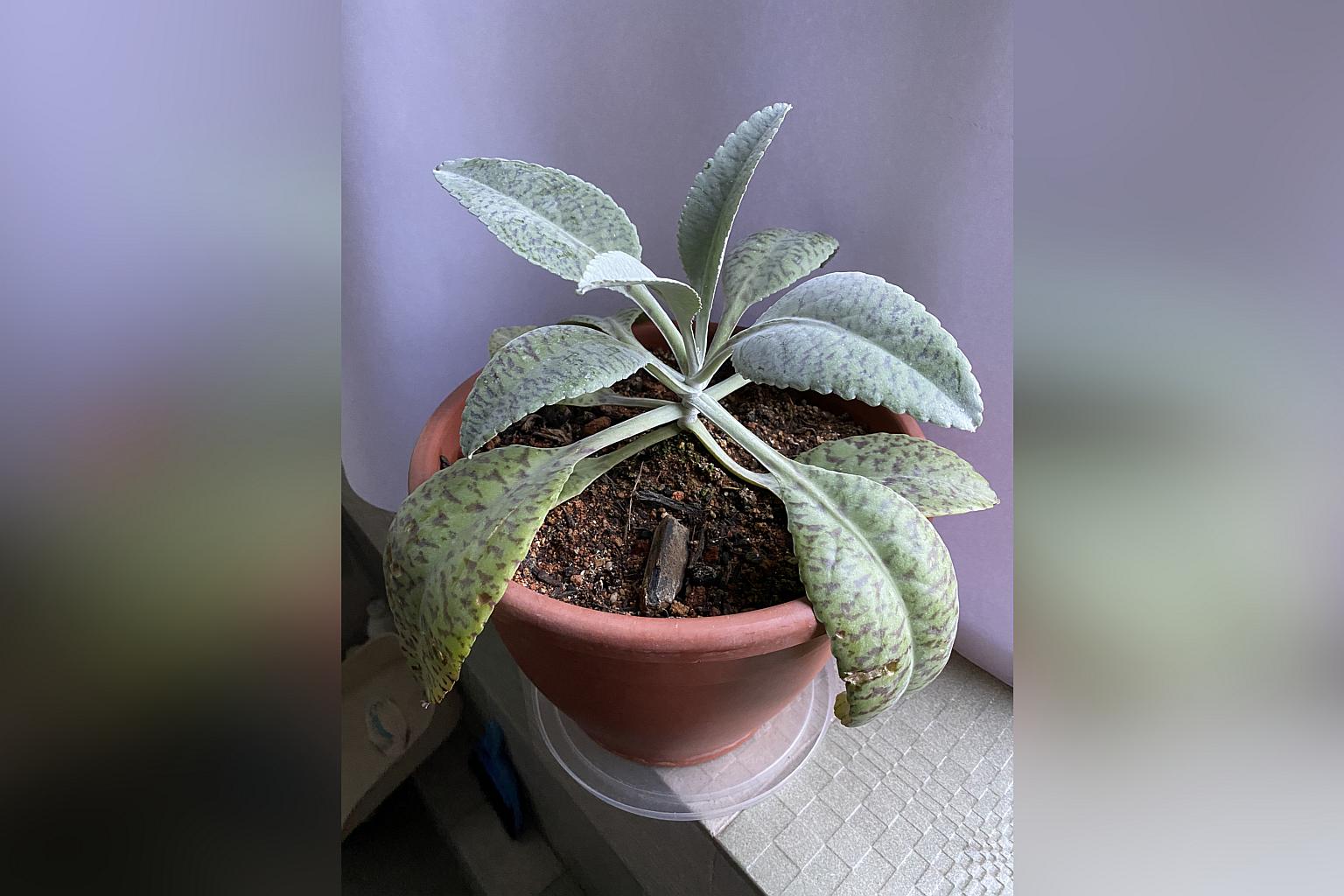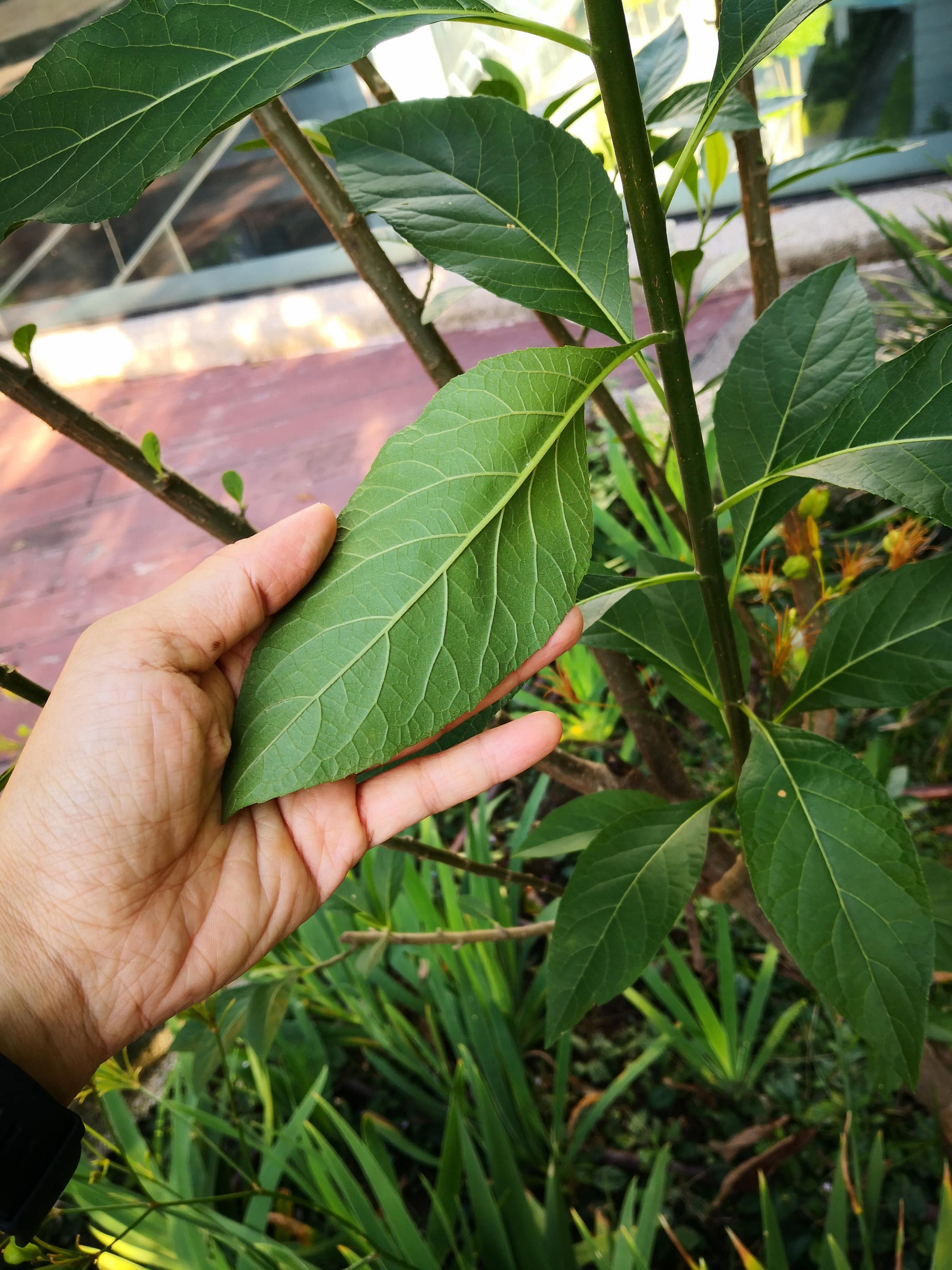Root Awakening: Succulent plant is called Donkey Ears
Sign up now: Get ST's newsletters delivered to your inbox

The plant is botanically known as Kalanchoe gastonis-bonnieri.
PHOTO: ALAN TOK
Follow topic:
Succulent plant is called Donkey Ears
What is this plant and how do I care for it? As it grows, the lower leaves droop and rot.
Alan Tok
The plant is botanically known as Kalanchoe gastonis-bonnieri. Its common name is Donkey Ears, which is likely a reference to the appearance of its large leaves.
This plant needs good light to thrive, so grow it in a spot that gets at least six hours of direct sunlight a day. The growing media should be well-drained. Let the plant dry out slightly between watering sessions.
The rotten lower leaves indicate that the current growing medium is too moist. Water the plant less frequently and make sure it gets enough sunlight, which will help to dry it out.
The Donkey Ears can produce numerous plantlets along the edges of its leaves and can behave like a weed if these plantlets are allowed to drop and grow around the mother plant.
Lack of light limits gardening options
I live in a walk-up apartment with a flower trough that gets only a little morning sun. Is there a flowering or colourful shrub I can plant which will bloom with minimal sunlight?
Philip Siow
Plants require light to photosynthesise and grow. With so little light, your options are limited. Without further details on the duration and intensity of the morning sunlight your planter gets, it is difficult to advise on a suitable plant.
For dim areas, you can choose foliage plants that are tolerant of low light conditions. Unfortunately, flowering species are generally unsuitable for such conditions, as most of them need more light.
You can consider cultivars from the Dracaena genus and aroids such as the ZZ plant (Zamioculcas zamiifolia) and Peace Lily (Spathiphyllum cannifolium), but these plants will dry out quickly if the site is too windy.
Alternatively, you can set up an indoor garden by a window and install grow lights, which will give you more options in terms of the plants that can be grown.
Shrub is the South African Leaf

Is this plant the Black-Faced General or Strobilanthes Crispa? It has grown to a height of more than 2m with spikes on the branches, unlike the typical shrub-like species.
Chin Lih Shyan
The plant is a different medicinal species commonly grown in Singapore. Its botanical name is Gymnanthemum amygdalinum and is known via common names such as Bitter Leaf and South African Leaf.
Its leaves reportedly have antimicrobial, antidiabetic, antibacterial, anti-inflammatory, antihelminthic, hypolipidemic and antioxidant properties. However, do not self-medicate without consulting a professional.
The plant grows well in direct sunlight, tolerates a wide range of soils and can be propagated via stem cuttings.
Gardening on air-conditioner ledge is dangerous
My wife wants to keep plants on the air-conditioner ledge, but those we have placed there seem to die after a while. The ledge gets short periods of sunlight in the afternoon due to the building design. Are there any plants that can tolerate such conditions?
Walter Wong
Do not place plants on the ledge as they cannot be safely secured and may fall and become killer litter. It may also be difficult for you to access and maintain the plants properly.
Due to the design of most buildings, the ledges usually do not get enough light. It is best to grow plants on your balcony. Grow-light set-ups can also be installed anywhere in the home for indoor plants. You can look into hydroponic systems with grow lights, some of which are aesthetically pleasing and can be matched with your interior decor.
Weed is the Climbing Dayflower

I found this plant with blue flowers growing by the road. What is it?
Leong Tuck Sum
This plant is commonly known as the Climbing Dayflower or Spreading Dayflower. Its botanical name is Commelina diffusa. It is a herbaceous plant that occurs as a weed in lawns and planted areas, and occasionally produces blue flowers which yield a dye. It has medicinal properties, and its young shoots can be cooked and eaten.
- Answers by Dr Wilson Wong, an NParks-certified practising horticulturist, parks manager and ISA-certified arborist. He is the founder of Green Culture Singapore and an adjunct assistant professor (Food Science & Technology) at the National University of Singapore.
- Have a gardening query? E-mail it with clear, high-resolution pictures of at least 1MB, if any, and your full name to stlife@sph.com.sg. We reserve the right to edit and reject questions.

